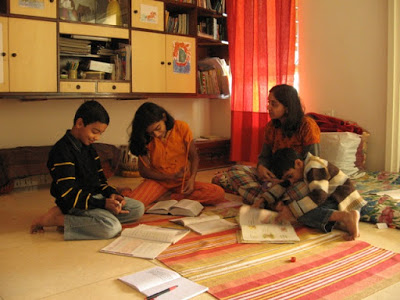I wrote a blog post titled ‘The educational institution of the future: A fantasy’ in January 2009. Some days ago I discovered that the idea put forward in this post became what are now being called microschools. And Wikipedia tells me that the name microschools was put forward for the first time in February 2010. A full year after my blogpost! 🙂
The wikipedia article defines microschooling as:
“Micro-schooling is the reinvention of the one-room school house, where class size is typically smaller than that in most schools (15 students or less in a classroom) and there are mixed-age level groupings. Generally, micro-schools do not meet all 5 days of the school week, and their schedules look different than a traditional public or private school.”
My blog post talking about a very similar idea is reproduced below:
—– My 2009 blog post —–

Add another adult facilitator or so and add not more than a couple of children and there you have the prototype for the school of the future.
What fun!
It is foolish from our fast changing perspective today to predict the contours of a future even a few years ahead in time. But we have to begin the discussion somewhere. So listed out below is a random, incomplete look at the practical details of a school of the future.
– No school has more than 10 students.
– There are no teachers (Only facilitators who speak when they are spoken to 🙂 ).
– The facilitators direct the efforts of the students when they can or pass them on to other facilitators who can guide them.
– Anybody above the age of 14/15 and who has been a student of this type of school from their first school days is considered qualified to become a facilitator (Till we get the first batch of such facilitators any industrial era trained person who has a high school certificate can become a facilitator).
– All schools run in their local communities in a house or community area not more than a ten minute walk for any child.
– The minimum infrastructure in a school is an internet ready computer.
– The thousands of school buildings and their administrators that mushroomed across the world for the industrial era become sports and other similar educational infrastructure providers.
– The education of the future focuses on body, mind and spirit development (Includes things like sports, yoga, CBSE text books, meditation etc).
– The education of the future also focuses on social and cultural development (Includes interpersonal growth, music, social service activities etc).
—– End of my 2009 blog post —–
My blog with the above and other education related posts is available here.
I think that after last year’s Covid-impacted school experience, many parents and children will be ready to shift to microschools. What do you think?

Leave a Reply to aslishiksha Cancel reply
You must be logged in to post a comment.